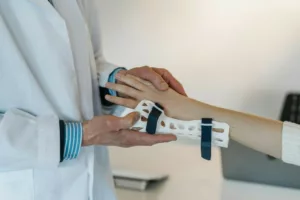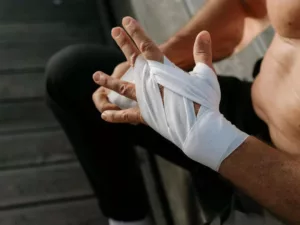(Last Updated on October 9, 2025 by Henry)
I’m going to walk you through the ins and outs of a sprained thumb, a surprisingly common injury that affects many of us. A sprained thumb occurs when the ligaments, the tough bands of tissue connecting bones at a joint, stretch too far or even tear. Your thumb has several ligaments, and these are crucial for the dexterity and strength we take for granted every day.
In a mild sprain, ligaments are overstretched, while in more severe cases, they can be partially or completely torn, sometimes requiring surgery.
It’s important to understand that this isn’t just about dealing with the pain or inconvenience;
It’s about ensuring proper healing to maintain thumb function long-term.
There’s a lot to keep in mind with thumb sprains because the injury spectrum is broad, ranging from mild to severe. Each grade of sprain, from grade 1, which is mild, to grade 3, which is severe, brings its own set of challenges.
It’s not only about the level of pain but also includes factors like swelling, bruising, and joint instability. With a sprained thumb affecting your ability to grasp or pinch, even simple tasks like turning a key or texting can become formidable.
Identifying a Sprained Thumb: Causes and Symptoms
Picture this: you’re enjoying a game of basketball or perhaps you’re out skiing, and suddenly, you land awkwardly on your hand. The next thing you know, your thumb hurts, and you’re wondering what’s wrong. Chances are, you could be dealing with a sprained thumb.
A sprain is the result of a sudden, strong force that bends the thumb. This kind of injury typically happens when the thumb is bent backward away from the palm or twisted in an unusual direction. Falls are a common culprit, especially when you land on your hand, and the infamous ‘skier’s thumb’ occurs when a skiing fall forces your thumb to jerk back while holding onto a ski pole.
Now, let’s get down to what you might experience with this injury. For starters, a mild thumb sprain (grade 1) comes with tenderness and pain around the base of your thumb, accompanied by swelling and sometimes bruising. If it’s a moderate sprain (grade 2), the ligament’s partially torn, and you’re looking at limited thumb function and range of motion, alongside the pain and swelling.
If it’s severe (grade 3), the pain escalates sharply because the ligament’s completely torn away from the bone. Your thumb joint might feel unusually loose, and you might spot a lump at the base of the thumb due to the ruptured ligament. In cases like these, you’re going to see swelling and bruising as well.
You might be thinking, ‘Is this a sprain, or did I do something to the muscle?’ A sprained thumb means you’ve overstretched or torn the ligaments – the tough bands connecting bones to each other at the joints. A strained thumb, however, involves an injury to the muscles or tendons, which are the cords attaching muscles to bones.
What if it’s not a sprain but a break? A broken thumb can sometimes be deformed or look misshapen, and just like a sprain, it causes intense pain, swelling, and bruising. However, a fracture is a bone issue, whereas a sprain is all about those damaged ligaments.
Now that we’ve covered the ins and outs of thumb sprain causes and symptoms, I’m going to help you understand who’s most likely to succumb to this injury. So if you’re catching a ball or hitting the slopes, read on to find out how you can better protect yourself.
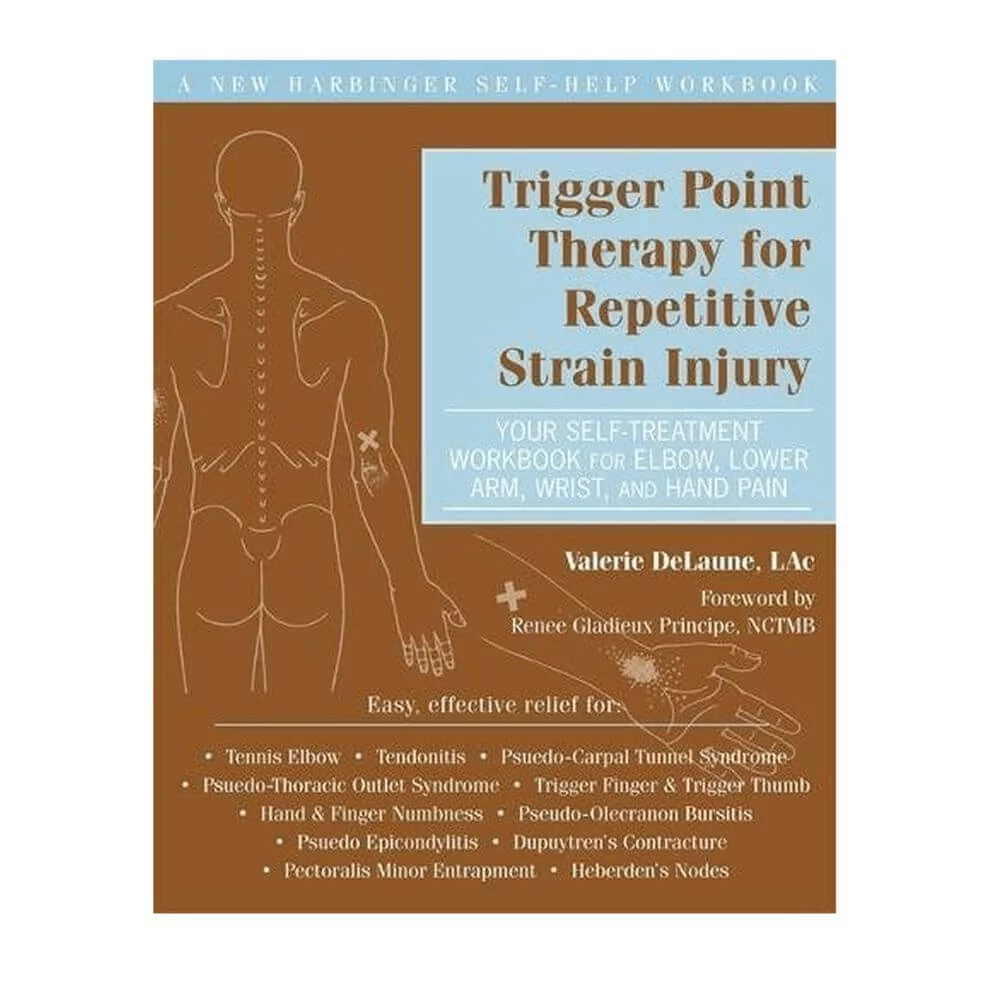
Identify & Manage Repetitive Strain Injury Symptoms Quickly

Follow Proven Advice to Overcome Repetitive Strain Injury

Practical Methods to Treat Repetitive Strain Injury Effectively
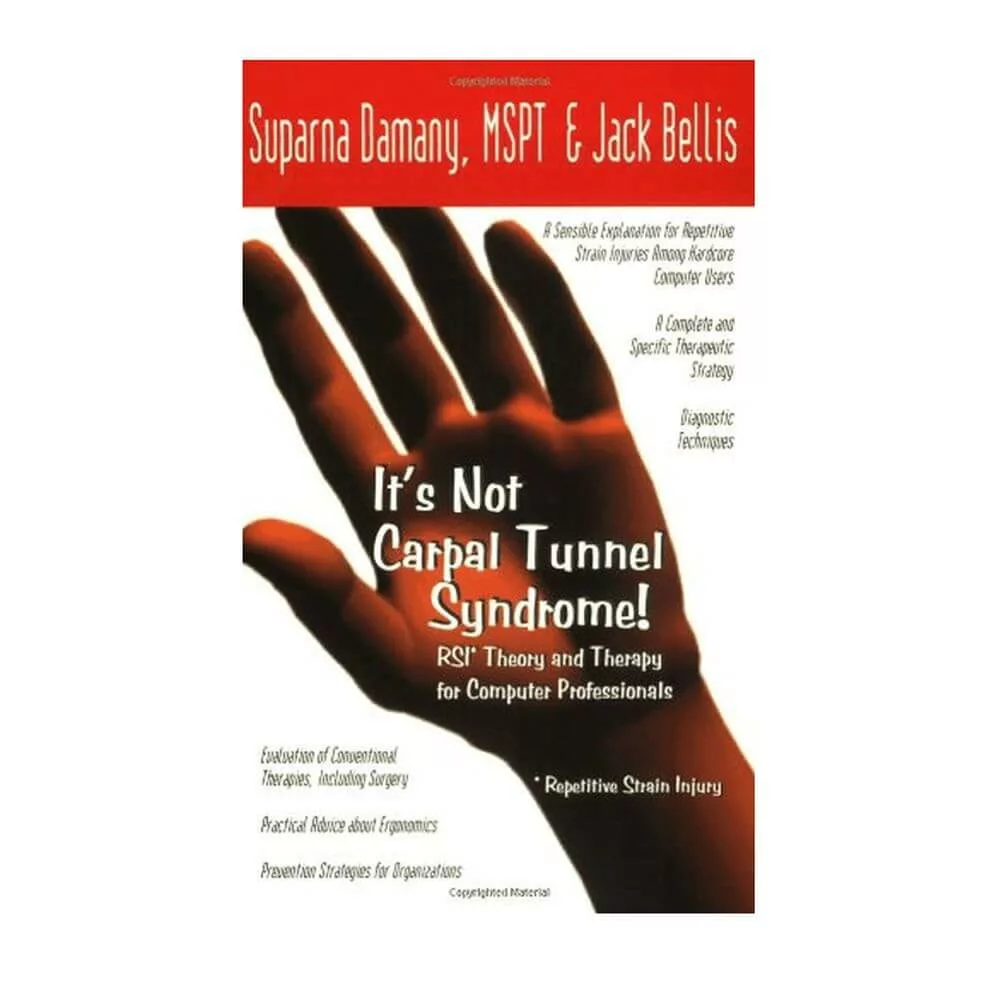
Relieve Carpal Tunnel Syndrome and Avoid RSI Traps
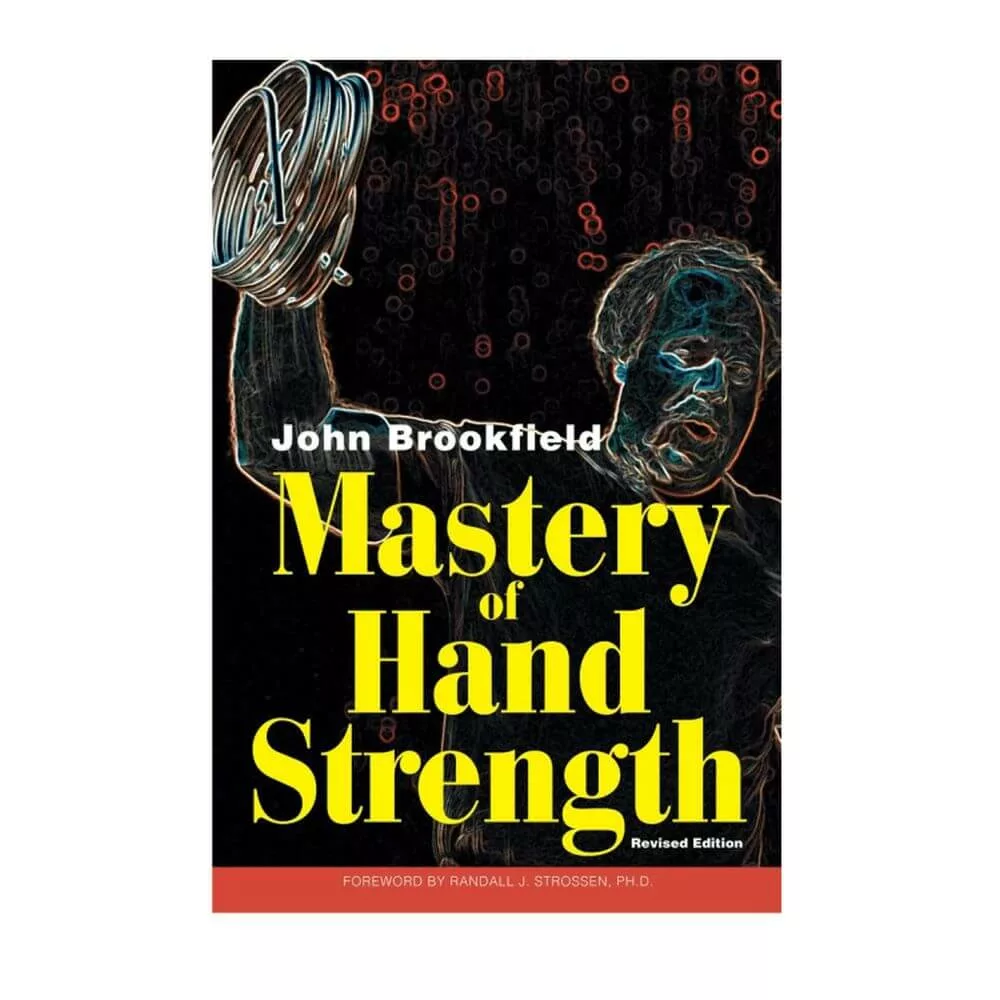
Build a Powerful Grip with Mastery of Hand Strength

Master Your Grip with the Official Captains of Crush Grippers Guide

Boost Your Grip Strength with This Powerful Resource

Unlock Grip Strength with The Grip Master’s Manual
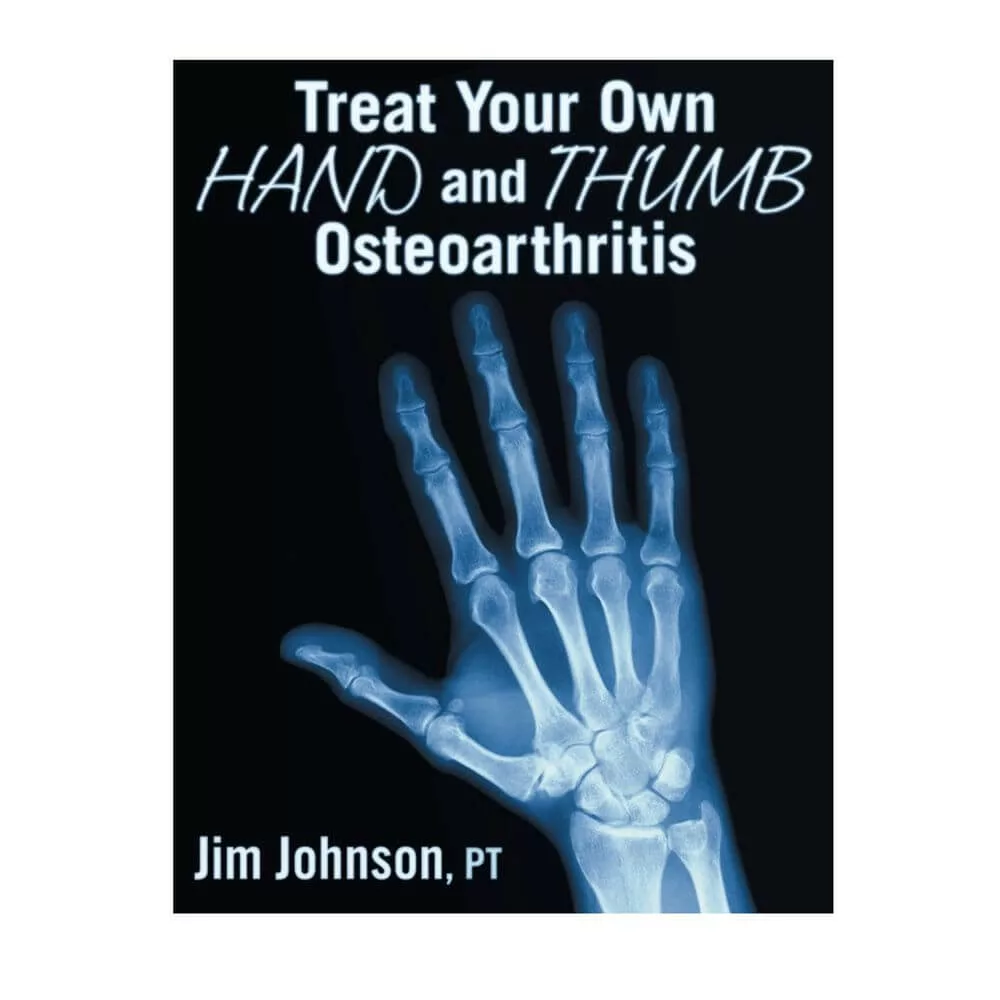
Effective Treatments for Osteoarthritis to Reduce Pain
Who Is at Risk? Understanding Demographics and Risk Factors
I’m going to pinpoint exactly who’s more likely to experience a sprained thumb. It’s a common misconception that thumb sprains are limited to professional athletes or seasoned adventurers.
In fact, anyone, regardless of age or fitness level, can end up with this injury. But let’s hone in on some specifics. If you’re someone who enjoys hitting the ski slopes,
or if you regularly play sports that involve catching or hitting a ball, such as baseball, basketball, volleyball, or football,
you’re in the high-risk zone for spraining your thumb. That’s not all. It’s not just about sudden, impact-related activities.

Occupations or hobbies that involve repetitive grasping or hand twisting can also set you up for what’s known as a chronic thumb sprain, or gamekeeper’s thumb.
Now, what can you do if you’re in these risk groups? First off, don’t worry too much about stopping the activities you love, but do take precautions.

Choose something that resonates with you, whether it’s doing hand stretches, warming up properly before activities,
or wearing the right safety equipment, like thumb guards or supportive wrist straps.
I really hope that these insights encourage you to be proactive about thumb sprain prevention.
As we move on to the next section, I’ll talk about how doctors diagnose a sprained thumb,
So you know exactly what to expect if you ever find yourself in that situation
Diagnosis of a Sprained Thumb: From Examination to Imaging
I’m going to walk you through how a healthcare professional figures out if you’ve got a sprained thumb. It starts with a good chat about what happened and a physical exam. Your doctor will ask you about the injury: Did you fall? Where does it hurt? They’ll get you to move your thumb in different directions to see where the pain flares up and how the joint feels.
Now, it’s not just about the physical exam. Imaging might be on the menu, too. An X-ray is often the first step to rule out a break. If the X-ray doesn’t show a fracture, but there’s still concern, your doctor might suggest a stress X-ray. This is where they take a picture while applying pressure to the thumb to see how the ligaments are holding up.
In some cases, more advanced imaging is needed. Musculoskeletal ultrasound is a fancy way of getting a live-action view of your thumb’s soft tissues at work.
And if there’s still a question mark hanging over your diagnosis, an MRI gives the clearest image of all: it can spot even the tiniest ligament tears or strains.
They don’t mess around with a maybe when it comes to your thumbs.

Alright, moving on, once the sprain has been confirmed, especially if it’s mild, you can breathe a sigh of relief because there are things you can do at home to help your thumb get back in the game. That’s where we head next.
Home Remedies and Treatment for Mild Thumb Sprains
If you’ve got a sprained thumb, it’s crucial to start treatment right away to quicken recovery and minimize pain. For mild thumb sprains, there’s a tried-and-true approach you can follow at home, known as PRICE therapy. Let’s break that down:

Protection is your first step. A thumb spica splint is your go-to for safeguarding the injured area. This splint helps immobilize your thumb, allowing the ligaments to rest and heal. You won’t need this forever, just for the first few days post-injury.
Next, it’s all about rest. Your thumb and hand need a break from activity for at least 48 hours following the accident. Try to keep hand usage to a minimum, even if it feels okay to use. This rest period is vital for the healing process.
Icing your thumb might seem simple, but it’s highly effective. Apply ice to reduce swelling and inflammation. But here’s the key: moderation. A few minutes, three to five, multiple times a day, is ample. Steer clear of over-icing to avoid frostbite.
Using a compression bandage is also on the list. An elastic compression bandage or a specifically designed thumb spica splint should do the trick. It helps control swelling and gives your thumb the extra support it needs.
Elevation is another critical element. Whenever you’re sitting or lying down, keep your hand raised above your heart level.
This position helps reduce swelling by decreasing blood flow to the injured area.
Finally, consider taking over-the-counter pain relievers, like aspirin or ibuprofen.
These can help with both swelling and pain management, making your recovery period a bit more comfortable.
I want to emphasize that while these tips are great for mild sprains, if your thumb isn’t getting better or if the pain worsens, you should absolutely consult with a healthcare provider.
Now, if you’ve got a severe thumb sprain, you’re going to need a different approach. Let’s take a look at what that involves in the next section.

Severe Thumb Sprains: Medical Intervention and Therapy
When faced with a severe thumb sprain, where the ligament is completely torn, a comprehensive and professional treatment plan is paramount. This isn’t just about temporary relief; it’s about ensuring proper healing and regaining the full functionality of your thumb. Here’s how to navigate the recovery process:
Firstly, a thumb spica splint is usually necessary. A healthcare provider will fit you with one, which you might need to wear for 6 to 12 weeks, depending on the injury’s severity. It’s crucial to adhere to your healthcare provider’s advice regarding the duration of wearing the splint to avoid compromising healing.

Apply ice immediately after the injury and periodically thereafter to reduce swelling and manage pain. This simple step can have a significant impact on your recovery timeline.
Over-the-counter pain relievers can be effective for managing pain and reducing inflammation.
Always follow the recommended dosages or consult with your healthcare provider for advice specific to your situation.
If your ligament is completely torn, surgery may be recommended. There’s a variety of surgical techniques that can be employed, such as reattaching the ligament to the bone or repairing an avulsion fracture with bone anchors, pins, or screws.
The specifics will depend on your injury and the expertise of your surgeon. Following any surgical intervention, physical therapy will likely be part of your rehabilitation.
Stretching exercises and activities to improve strength and mobility should be carried out under the guidance of a professional physical therapist.
Your thumb’s recovery and the restoration of its full range of motion rely heavily on your commitment to physical therapy.
Lastly, throughout the healing process and beyond, consider protective measures to prevent re-injury.
This includes using protective gear during sports, avoiding repetitive strain, and staying vigilant during activities that could pose risks to your hands.

Dealing with a severe thumb sprain can be a daunting experience. But remember, your first attempt at treatment is not your last. You can always adjust your approach down the road if you need to. Healing from such an injury takes time and patience, so don’t rush your recovery. Ensure you have a good support system, both medically and personally, to help you through the treatment and rehabilitation phases.
I really hope this guide has provided you with a clear understanding of severe thumb sprains and how to approach their treatment.
Remember to choose something that resonates with you when it comes to physical therapy exercises and always prioritize your health. Your thumb, and your daily comfort and capability, depend on it.
Thanks for Stopping By
Have Questions?
Please Leave A Comment

